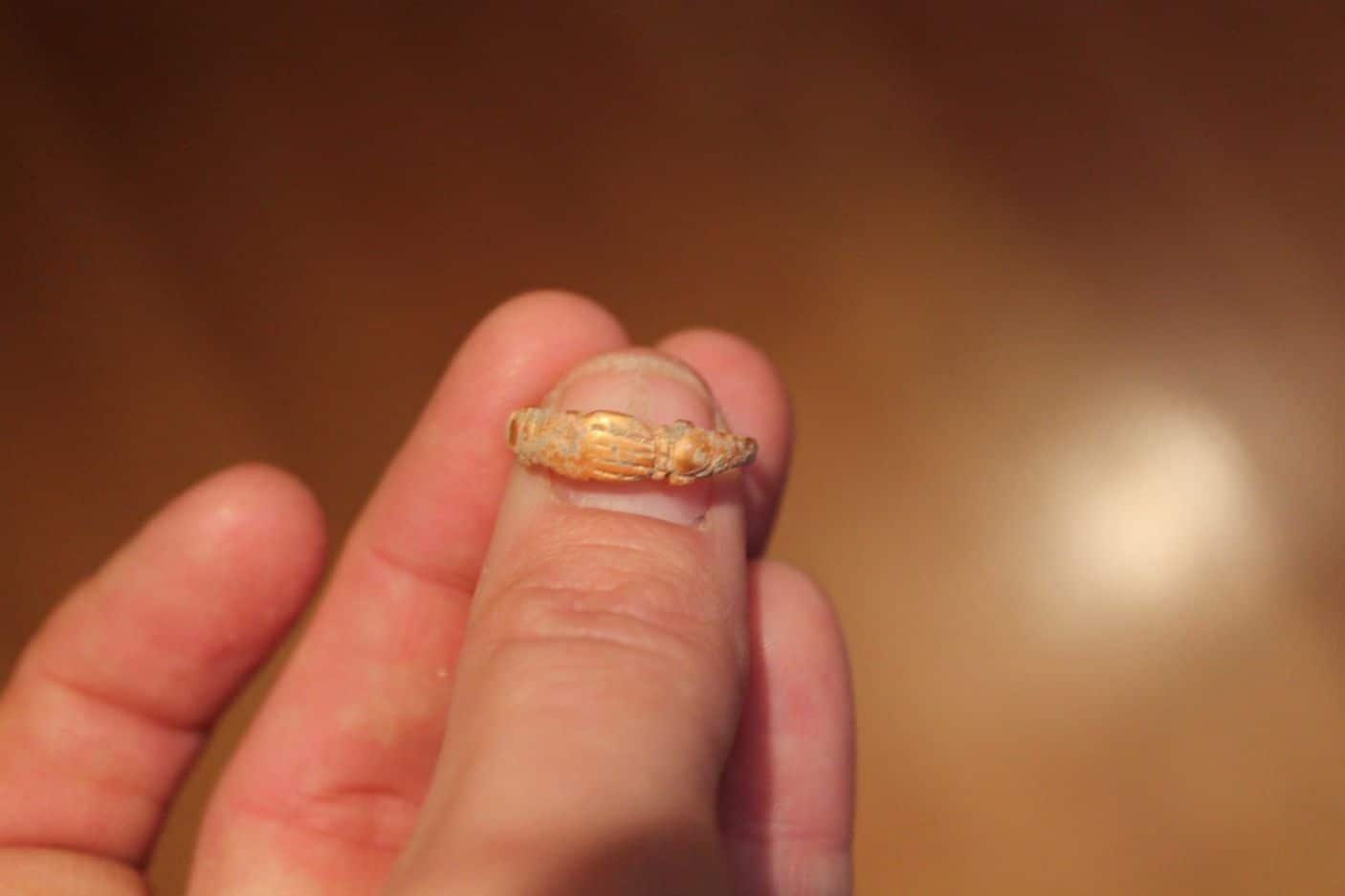Only a fragment of a Hebrew inscription was found in the cemetery used from the 14th to 17th century, because the pope decreed Jews should be buried in unmarked graves.
- Second Monumental Arch of Titus Celebrating Victory over Jews Found in Rome
- Nero’s revolving restaurant really existed, archaeologists prove
- Before Islam: When Saudi Arabia was a Jewish kingdom
Archaeologists in Rome have found remains from the city’s Jewish cemetery during the Middle Ages, along with tangible reminders of the persecution suffered by the community living under papal rule.
While the discovery was announced earlier this week, the dig was conducted over the last six years in a building undergoing refurbishment just outside Trastevere, the neighborhood across the Tiber from Rome’s center.
Experts have recovered 38 well-preserved skeletons and believe the burials were part of the Campus Iudeorum – the Field of the Jews, as ancient maps described the cemetery that was located in this area and was in use from the mid-14th to the mid-17th century.
“We did not have a lot of elements to identify it,” said Daniela Rossi, the archaeologist in charge or the project. The almost complete absence of artifacts and the simple burials did point to Jewish funerary practices, she said. The only objects recovered in the dig were two small gold rings found on a woman’s fingers and part of a scale that was buried with a man, “perhaps as a reference to his profession, or a sign that he was a just person,” the archaeologist said.

One of the few objects recovered in the dig: A gold ring found on a woman’s finger in the medieval Jewish cemetery in Rome. Soprintendenza Archeologica di Roma
Urban’s ban
What convinced experts that they had found a lost Jewish cemetery was the recovery of a fragment of a tombstone with a few letters in Hebrew, possibly spelling out the word “here,” the archaeologist said.
“It was definitely some kind of marker for a tomb,” Rossi told Haaretz in a telephone interview, adding that the fragment was found in a layer of destruction just above the actual cemetery.
This fact, along with the apparent absence of tombstones, is consistent with what we know about the life of Jews in Rome and the central Italian regions ruled by the popes in the late Middle Ages and early Modern Era. Specifically, in 1625, Pope Urban VIII decreed that Jews should be buried in unmarked graves, and ordered that pre-existing tombstones be removed or destroyed.
The prohibition was only one of the many restrictions that the popes had progressively imposed on the oldest Jewish community in Europe.
The first Jews arrived in the city in the second century B.C.E., and many more came – either voluntarily or as captives – following the Roman conquest of Judea in 70 C.E. Many settled in Trastevere: today a favorite nightlife spot for tourists, back then it was one of the city’s most multicultural areas.
“It was already a very dynamic neighborhood, close to the docks and warehouses on the Tiber, filled with traders and artisans, where many different religions and communities met,” Rossi noted.
As Rome became the capital of the Western Christian world, anti-Jewish sentiment and laws intensified. By the 14th century, when the newly-discovered cemetery was opened, Jews had to pay special taxes and were frequently harassed by mobs. In 1555, they were confined to the Ghetto, a cramped, unsanitary neighborhood opposite Trastevere, which was frequently flooded by the Tiber.

Remains of ancient Roman tanneries found below the medieval Jewish cemetery in Rome. Soprintendenza Archeologica di Roma
Signs of starvation
By the time Urban came up with his ban on tombstones, Jews were also forced to wear distinguishing marks on their clothing, and had to periodically attend church sermons that aimed to convert them.
The harsh conditions took their toll on the city’s Jews. Rossi said the 38 skeletons recovered, most of them of adult men and women, showed clear signs of malnutrition and a poor diet, particularly lacking in protein. She added that forensic experts had only conducted a limited analysis of the bodies out of respect for the remains, and that she was in touch with the Jewish community of Rome to arrange for their reburial.
The ban on tombstones remained in force until the mid 19th century, by which time the cemetery in Trastevere had long been closed. Since 1645, Jews had been burying their dead in a graveyard on the Aventine hill – which was itself destroyed during the fascist era.
Only a fraction of the cemetery in Trastevere could be excavated, as archeologists mostly worked in the courtyard of the early-20th-century Roman palazzo that was being refurbished, Rossi said. The rest of the site is probably buried under the building’s foundations and a road that runs along it, she said.
Parts of the dig also went below the medieval cemetery, reaching the ancient Roman levels of habitation, at a depth of nearly seven meters. There archaeologists uncovered large plastered tubs, which, thanks to an inscription, they identified as the tanneries built in the early 3rd century by the emperor Septimius Severus, which supplied the Roman army with leather products.
Rossi said her team is working with the owners of the building, an insurance company, to make the site accessible to visitors.

By Ariel David
Source: Haaretz Mar 26, 2017
 eSefarad Noticias del Mundo Sefaradi
eSefarad Noticias del Mundo Sefaradi

